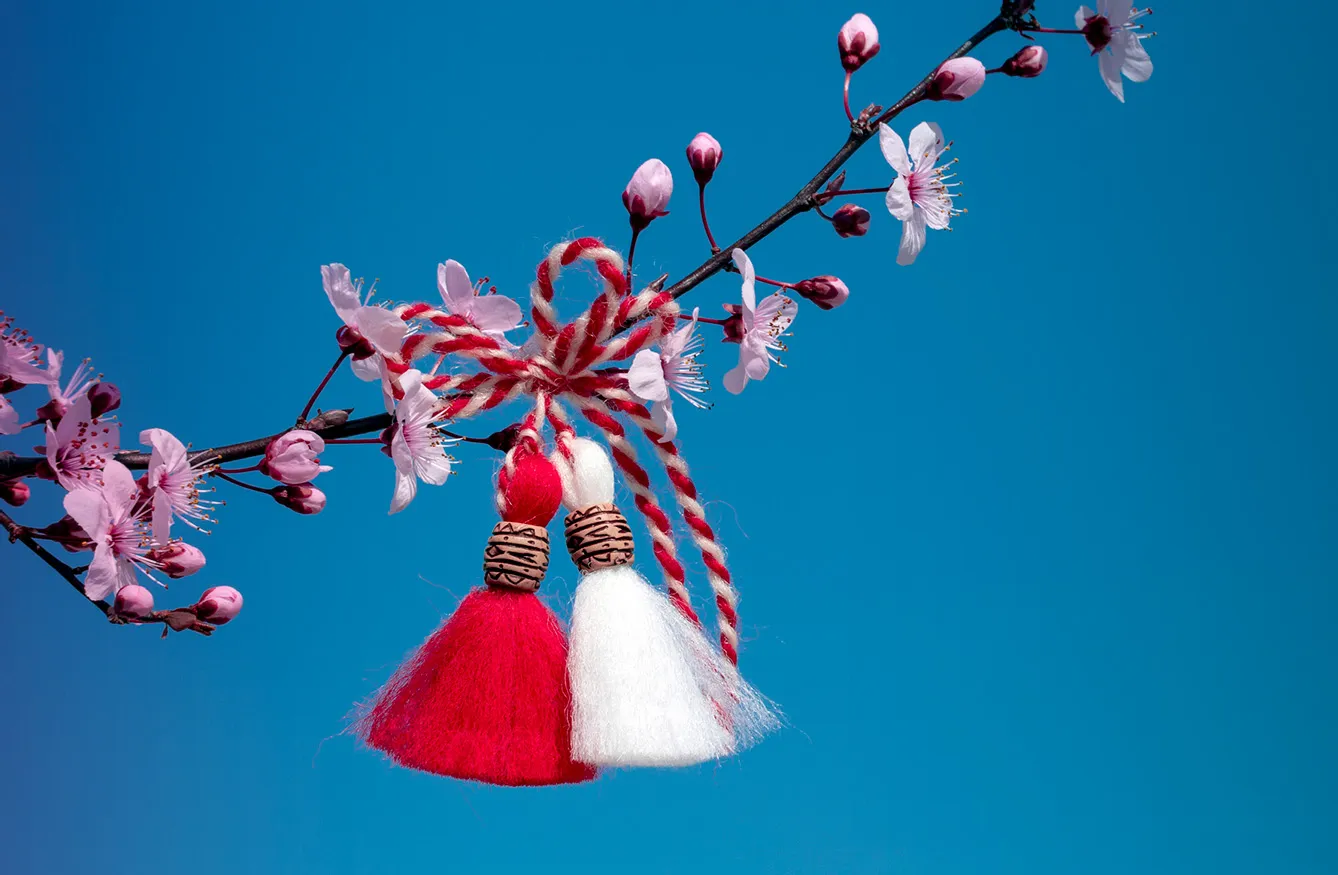Mărțișor in Romanian is a diminutive of March that, in free translation, means something like “little March.” It is an important day in the calendar, marked with centuries-old traditions, superstitions, wishes for good luck, and chasing away evil spirits. But why March 1?
First, let’s take a look at our beloved ancient Romans since it is them we mostly have to thank for the current calendar (and names of the months). You might be wondering why it is important to travel that far back in time when speaking of a Romanian tradition. The reason has to do with the significance of March 1 for the Romans.
You see, March 1 was the original New Year’s Day. The Romans thought (pretty sensibly) that the best time to celebrate the New Year is roughly when nature wakes up back to life. We say “roughly” as Romans originally had only ten months in a year, which made the Roman year about a quarter shorter than the astronomic year, hence making it lag behind cyclical natural phenomena. We have Julius Caesar to thank for the New Year’s celebrations on January 1 – not to mention the addition of the months of January and February.
Anyway, the discussion about the Julian calendar and the road to how we currently divide the year is truly fascinating, yet it is a story for another time. What is important for now is that the first of March was an important day, the start of the new year and the month honoring Mars – the god of war, but also, and perhaps less frequently remembered, he was the protector of agriculture.
Who stole the Sun?
Of course, there is no way of proving that the March 1 celebrations in Romania are in any way a continuation of the Roman traditions, especially since the oldest archeological finds resembling today’s Mărțișor tokens are 8,000 years old. Yet the fact that the celebrations coincide can be perceived as likely not void of any connection. Similar celebrations take place in Moldovia, Bulgaria, and North Macedonia. Romania has its own explanation for the festivities. Actually two.
The first speaks of a dragon, Zmei, who stole the Sun and the moon, drowning humanity in darkness. A brave man named Greuceanu fights the dragon and eventually restores the Sun and the Moon back to the sky. During his fight, he was mortally wounded, and his blood stained the white snow. After it melted, snowdrops grew in the places where the brave man’s blood fell.
This seems to be the most popular legend, present in similar versions in other countries of the region. The second myth speaks of the fight between Spring and Winter over a… snowdrop. One day, when Spring was strolling through a snow-covered forest, she came across a little snowdrop. She wanted to protect it, moved the snow away, and started warming it up. Winter did not like that and used its power to freeze the flower again. But Spring didn’t give up. She surrounded the flower with her hands and sheltered it. As she did so, she hurt her finger and stained the snow with her red blood. Eventually, the flower revived, and Spring defeated Winter.
The symbol of Mărțișor
Mărțișor is not only the name of the holiday but also of the indispensable item connected with the celebration. Mărțișor is the red and white string, weaved as a symbol of death and rebirth; 12 months weaved together in one to bring prosperity in the year to come; symbols of Winter and Spring; passion and fertility; purity and vitality. Two threads weaved together are often adorned with amulets, like in ancient times. Traditionally, Mărțișor were made by women, but these days men join in and also gift the ribbons to people important to them in their lives. The gift of Mărțișor was connected with wishes of good luck, prosperity, energy, and success.
How to wear Mărțișor and avoid bad luck
Once gifted the Mărțișor on March 1, you should wear it for the following 9 to 12 days. There are variations of the tradition, depending on the region, but this is the most generic. When this time passes, you should never throw away the Mărțișor! This would bring you bad luck! Commonly, used Mărțișors are tied to a tree (with a wish that is said to come true). The legend has it that should the tree with your Mărțișor bloom, you are in for a year of prosperity and good luck. And since traditional Mărțișors are simple to make, why not test the Romanian way this year and try to put a lucky spell on your 2023? It seems to work for Romanians!







